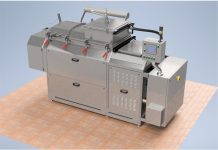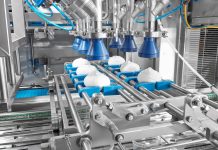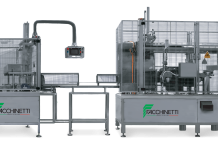The market demand, the hygienic-sanitary requirements in processing rooms and the quality of the air contained in them impose today high hygiene standards.
To conform to the new regulations, it is necessary to condition the rooms where foods are processed and packaged but also to treat the air circulating in them, at the same time trying to reduce the plant management costs connected with the rising price of electrical energy.
Air conditioning
Air and ventilation may represent an easy vehicle of contamination and, then, only an attentive and opportune treatment allows using ventilation as prevention means. To assure a high quality level of the air and to grant an adequate level of comfort and of workers’ health protection, it is necessary to control and to regulate the environmental thermo-hygrometric parameters and the concentration of polluting particles in constant and effective way. By reducing or eliminating the proliferation of some micro-organisms in productive departments we can decrease the biological contaminants and the air-transported polluting particles to an acceptable level. This can be obtained through an effective air filtering and, essential condition, by maintaining a sufficient over-pressure of the treated environments. Therefore, inside a productive building it is advisable that in the various areas the air quality level is chosen in relation to the type of process carried out.
Case history
Energy saving
By the new portioning, grating and packaging centre of the company Colla implemented at Fontevivo (PR) in the Spring 2013, they have applied the most advanced technologies not only for the air treatment but also for the energy saving. The latter has been obtained thanks to particular technical-design solutions adopted by MADEFRIGOR SRL , which have resulted in the approximate 40% energy saving in comparison with conventional solutions. The plant takes up a surface of around 3,500 square metres, with a conditioned airspace of about 12000 mc, 16/18°C temperature range and 55/65% of relative humidity. To satisfy the energy requirements, they have used two compact liquid refrigerators, each of them equipped with semi-hermetic direct drive rotary screw compressor, with a slide valve for the capacity control. The hermetic electrical motor is of squirrel-cage type, with bipolar induction. The semi-flooded tube bundle evaporator with patented system is based on the “falling film” solution able to assure: minor Freon load, better thermal exchange and high performances both with partial and full load. These machines produce in/out 0/+4°C glycol water for 518.50 kW refrigerators each, with a 124kW electrical absorption and a “COP” efficiency/ consumption ratio, unique of its kind, of 4.18. To assure their autonomy, each refrigerator is equipped with a primary independent hydraulic circuit and a secondary one, which collects the cooled water and glycol mixture from the tank and then sends it to users. For the condensation of the cooling fluid of each refrigerator, they have adopted an evaporation cooling tower, provided with a system able to automatically drain the water to the operating circuit from the effective saline concentration and to provide for the dosing of a product with bio-acid function and of another with anti-encrusting action. A pumping station allows the water circulation between each condenser and the cooling tower dedicated to it. The hydraulic circuits among the various components in the refrigerating unit, the users diffused in the factory and the condensation circuit have been realized with stainless steel insulated pipes by means of polyurethane injection and with outer coating executed with aluminium metal sheets.
The air treatment
It grants the adequate conditions of air temperature and sanitizing as provided for by the most severe international sanitary regulations. 3 different areas have been treated: 1 white 3000 mc area where the portioning and packaging activities are carried out; an analogous white area in which grating and packaging take place, and a grey area with a volume of 6000 mc (cube meters) that houses wrapping and picking. For the portioning and grating rooms, they have installed 2 air treatments units featuring 30000 mc/h, each at the service of the related room, provided with wide access doors for inspection, maintenance and sanitizing. The structure of the two air treatment units is self-supporting monocoque, with inner and outer fibreglass finishes, with interposed thermo-acoustic insulation made of closed-cell polyurethane foams with 53 mm. thickness. Each air treatment unit is composed by a set of dampers for the air circulation, outer air intake and free cooling functioning. They have provided for a first filtration level with G.4 filters, a second with F.9 filters and a last stage with absolute H.13 filters. For the grey area a 50000 mc/h air treatment unit has been installed, of modular type with thermal cutting, stainless steel panels, with interposed thermo-acoustic insulating material made of closed-cell polyurethane foams, 46 mm thickness. The unit has wide access doors for inspection, maintenance and sanitizing. The air treatment unit is composed by a set of dampers for the air circulation, the outer air intake and the free cooling functioning. It grants a first filtration stage with G.4 filters, a second with F.9 filters and a last stage with absolute H.13 filters. For each of the three areas, the air treatment section is equipped with two batteries with cold and hot thermal exchange in stainless steel pipes and aluminium fins. The ventilation is assured by a “plug fan” with electrical motor piloted by inverter. The air diffusion in the environment is granted by synthetic fabric pipes with inductive-type distribution. Being the three areas adjacent, to avoid contaminations they have provided for maintaining in over-pressure the portioning and grating areas with regard to the grey area, thanks to a dedicated air treatment unit (15000 mc/h UTA). The whole plant is monitored with “Cumix net” supervision system inhouse developed by Madefrigor. The numerous working windows of the software allow inspecting, modifying and implementing graphs of the numerous magnitudes detected by the system and storing the diagnostics of the controlled instruments into specific database.




